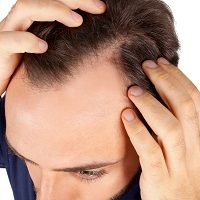Article
Economic Burden of Alopecia Areata Shown to be Significant Due to Work Impairment
Author(s):
This new data indicates that while it is not a physically limiting disease, alopecia areata can substantially affect patients’ lives on an individual and national level.

The economic burden of alopecia areata (AA) in Japan is approximately $857 million US dollars per-year, according to recent findings, with 78.2% of the economic burden attributed to overall work impairment and loss of productivity.1
These new findings were the results of a study involving a cross-sectional survey conducted to assess both the personal and nationwide burden of alopecia on an economic level in Japan, given the current lack of many treatment options.2 The research was authored by Manabu Ohyama, MD, PhD, from the Department of Dermatology at Kyorin University’s Faculty of Medicine in Tokyo.
“The objective of this study was…to investigate the personal economic burden of AA – including the cost of productivity loss – and estimate its burden at the national level in Japan by analyzing a real-world, cross-sectional survey of JDA board-certificated dermatologists and their consulting patients with AA,”
Background and Findings
The investigators collected their study data through the Adelphi Alopecia Areata Disease Specific Programme (DSP), which involved cross-sectional surveys and retrospective data analysis of dermatologists and their patients in Japan in the period between January and March of 2021.
The team’s eligibility criteria for clinicians included JDA board-certification and responsibility for drug management of a minimum of 3 patients with alopecia per month. Patients aged 15 - 64 years, with a confirmed diagnosis of ongoing AA and not participating in an AA clinical trial, were included in the study.
Severity groups were categorized by the investigators based on JDA guidelines using physician-estimated percentage scalp hair loss. The severity groups included in the guidelines which the team used were defined as S1 (with <25% scalp hair loss), S2 (with 25% - 49% scalp hair loss), and a combined group (with 50% - 100% hair loss).
The clinicians provided data for their consecutively consulting patients with alopecia, including scalp hair loss range, patient demographics, and financial burden related to prescription medication for alopecia, over-the-counter (OTC) medication, and wigs. Patients reported their productivity and activities over the course of the prior 7 days through the Work Productivity and Activity Impairment questionnaire (WPAI), which covered domains such as absenteeism, presenteeism, loss of work productivity, and impairment of activities.
The investigators’ study estimated individual costs of productivity losses and time losses for the study participants’ daily activities. For nationwide estimates, the AA DSP data was weighted by the team to be representative of population figures for sex, age, prevalence of aloepcia, severity distribution, and status of employment, using data from the Japanese 2020 Population Census and recently-conducted studies in Japan.
The investigators reported that, based on data from the 235 patients with alopecia who were in the range of 15 – 64 years in their study, they estimated the annual burden of alopecia to be around ¥112.7 billion (US$ 857 million). The team noted that 78.2% was attributed to productivity loss (overall work impairment).
Another major point of their study was that the severity of hair loss substantially influenced loss of patient productivity. Those with reported 25% - 100% hair loss were shown to have experienced double the productivity losses of those with less than 25% hair loss, emphasizing the value of achieving less than 25% hair loss as a recommended threshold for treatment.
The investigators reported that prescription medication was prevalent among the majority of alopecia patients, possibly as a result of recruitment at specialist visits. However, not all of those receiving specialist care were given medication, in line with current guidelines which indicate alternative approaches such as using wigs or no treatment at all.
The mean cost per wig was found by the research team to be relatively low, likely due to the lack of public subsidies for medical wigs in Japan, leading patients to opt for more affordable fashion wigs. They noted that current medication costs were relatively low, and that the recent approval of the JAK inhibitor baricitinib for alopecia can be expected to raise costs, especially for those with severe disease.
Alopecia areata’s impact on absenteeism was found to be relatively minor, but its major impacts on health-related quality of life, particularly mental health, contributed to substantial presenteeism. Considering the major concerns about workforce decline in developed economies, effective treatment for conditions that affect presenteeism, including alopecia, were noted as being vitally important.
“In conclusion, our data demonstrated a high economic burden on patients in Japan with AA, of which 78.2% was due to the costs of productivity loss,” they wrote.”…Considering the active treatment, it is important to control hair loss to a range of less than 25%. The current study provides evidence on which to base targeted interventions to minimize these effects.”
References
- Ohyama, M, Kamei, K, Yuasa, A, Anderson, P, Milligan, G, Sakaki-Yumoto, M. Economic burden of alopecia areata: A study of direct and indirect cost in Japan using real-world data. J Dermatol. 2023; 00: 1– 9. https://doi.org/10.1111/1346-8138.16888.
- Pratt CH, King LE Jr, Messenger AG, Christiano AM, Sundberg JP. Alopecia areata. Nat Rev Dis Primers. 2017; 3:17011.




